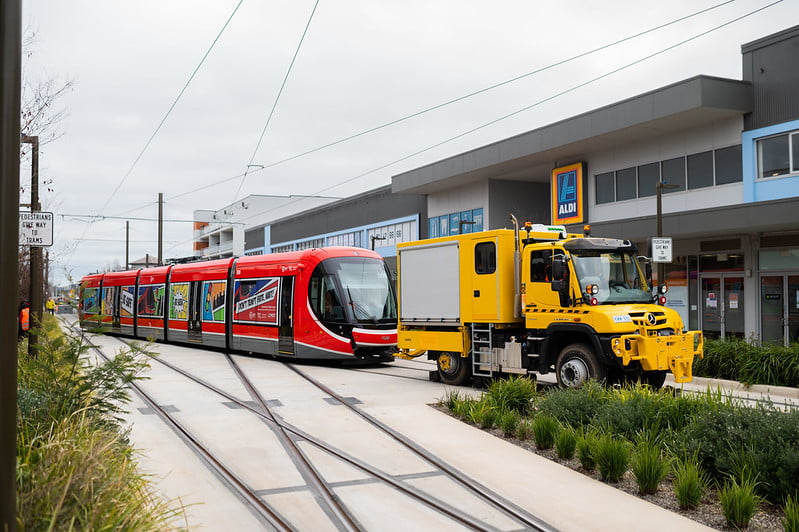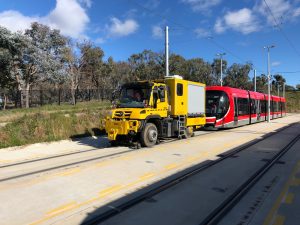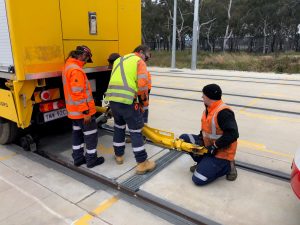On 11 August 2020 as part of Rail Safety Week, CMET completed a Rail Safety emergency exercise with ACT Emergency Services, ACT Police and Transport Canberra which involved simulating a collision between a light rail vehicle (LRV) and a pedestrian, and then the recovery of the LRV by unimog.
So what exactly is a unimog? I sat down with CMET Engineering and Maintenance Manager, Andrew Pearce, to find out.
What is a unimog?
The unimog is a universal vehicle that can operate both on the road as well as on rails. This allows the vehicle to travel to a work site or accident by road and then convert to a rail vehicle on site. CMET uses the Unimog for both maintenance with its rear mounted elevating work platform as well as an LRV tow vehicle capable of towing, shunting and recovering LRV’s from the light rail network in the event of a complete system failure or accident.
How does it work?
The unimog drives on the road as a normal vehicle, and can also drive on the light rail tracks as a rail vehicle. The unimog has special wheels that extend down to act like LRV wheels, securing it to the light rail tracks. Once ‘railed’ a connection couples with the LRV to allow towing. Think of this like attaching a trailer to a car through the use of a tow bar.
Are there special licenses required to drive the unimog?
Yes. To be qualified to drive the unimog you must hold a medium rigid road vehicle licence, and have completed specific training for rail operations of the vehicle.
How often is the unimog at CMET used?
I am pleased to say that our unimog has not yet been used in a real-life LRV recovery. It is used predominately for training and maintenance activities within our Mitchell depot facilities, several times a month.
The unimog remains on standby in the exceptional event it may be required.
For your point of view, how successful was the LRV recovery during the Rail Safety Week emergency exercise?
From my point of view, the LRV recovery, as well as the rest of the exercise, went very well. The opportunity to demonstrate the CMET team’s skills and competence in executing a recovery, and their readiness to be able to respond to a real-life event. Our team put a lot of effort into their training and they did a great job on the day.





